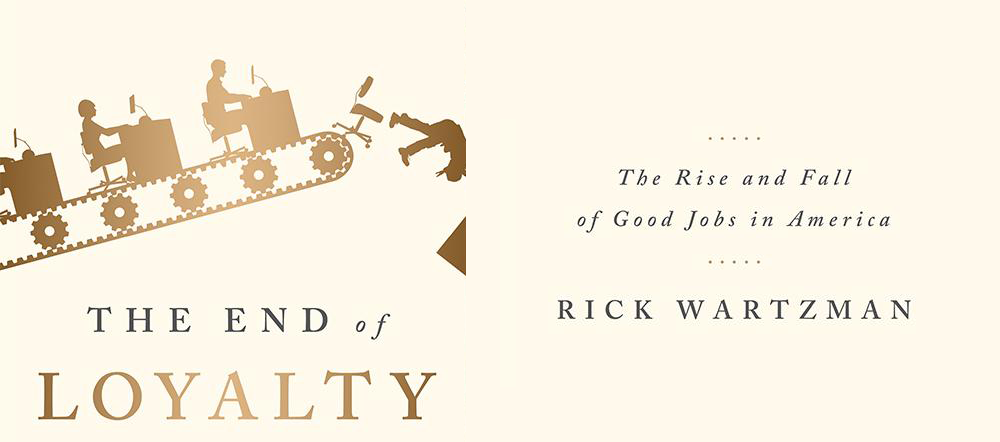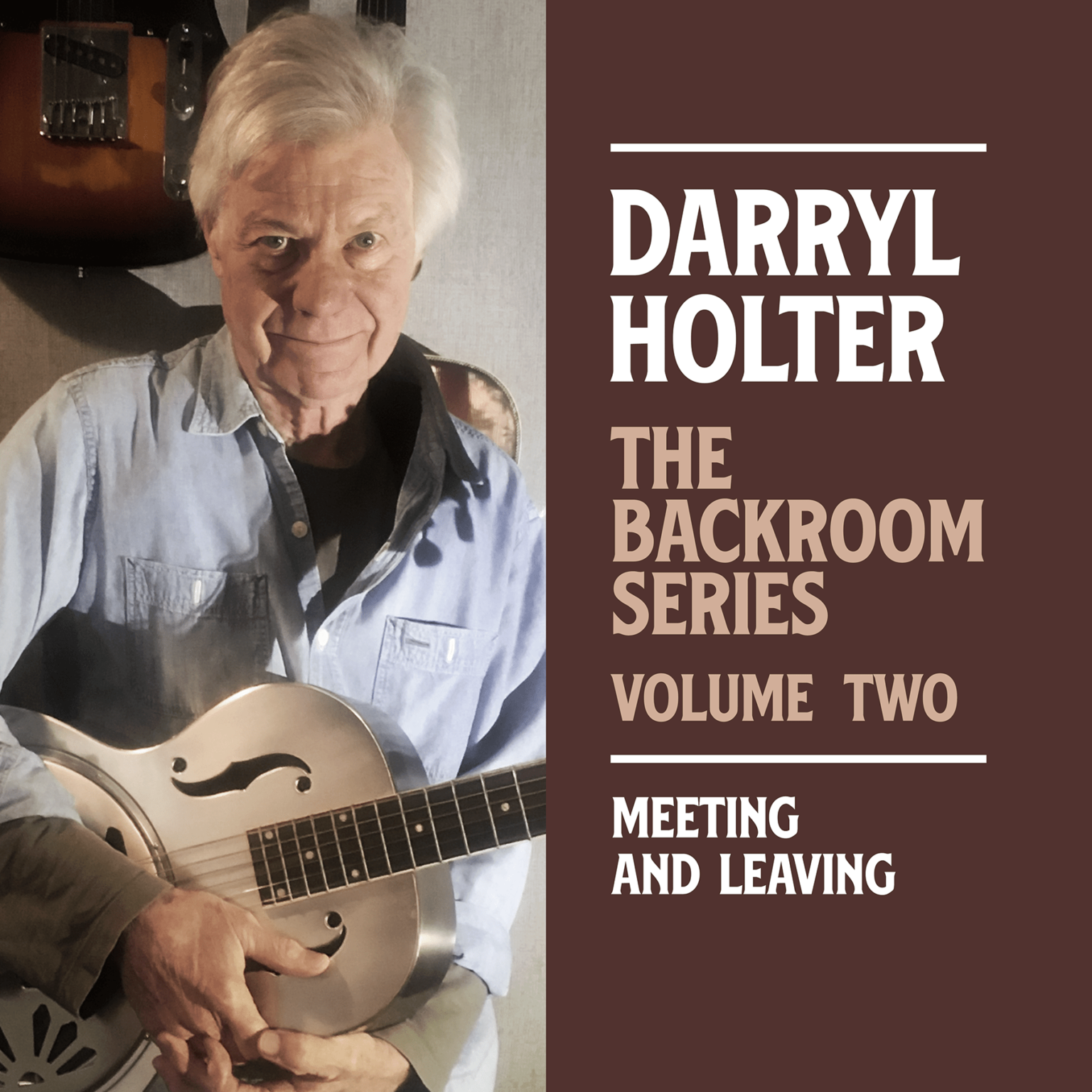The Collapse of the Postwar Compact: On Rick Wartzman’s The End of Loyalty

The Collapse of the Postwar Compact: On Rick Wartzman’s “The End of Loyalty”
Book Review by Darryl Holter
Los Angeles Review of Books
SINCE THE NOVEMBER ELECTIONS, millions of Americans have been asking how it happened that Donald Trump became president. But perhaps we should be asking another question: what ever happened to good jobs in the United States? Today, almost half of the workforce earns less than $15 per hour. About a third of working-age men are either unemployed or unable to keep a family of four out of poverty. Median pay for women has not improved since the end of the last century, and female participation in the labor market has fallen. Rick Wartzman, a business writer for The Wall Street Journal and Los Angeles Times for 15 years and currently senior advisor at the Drucker Institute, provides an answer to this complicated but vitally important question in his timely new book, The End of Loyalty: The Rise and Fall of Good Jobs in America. While recognizing the multiple factors that have converged during the last 25 years — globalization, automation, the decline of manufacturing and of unions — Wartzman singles out another largely overlooked cause for the loss of good jobs: “[a] corporate culture that has explicitly elevated shareholders above employees.”
 Rather than simply marshaling an array of statistics, Wartzman reconstructs a unique moment in mid-20th-century American history when powerful corporations offered employees and retirees family-supporting wages, profit-sharing, health care, and other benefits in order to earn and retain their loyalty. Conjuring up this vision of a lost Golden Age of American labor may help us to understand why Trump’s clarion call to “Make America Great Again” resonated so powerfully with a large swath of predominantly older, white, working-class voters.
Rather than simply marshaling an array of statistics, Wartzman reconstructs a unique moment in mid-20th-century American history when powerful corporations offered employees and retirees family-supporting wages, profit-sharing, health care, and other benefits in order to earn and retain their loyalty. Conjuring up this vision of a lost Golden Age of American labor may help us to understand why Trump’s clarion call to “Make America Great Again” resonated so powerfully with a large swath of predominantly older, white, working-class voters.
Wartzman begins his narrative in March 1943, when 19 of the top business leaders in the United States met at the Harvard Club in New York to plan for the postwar future. While the war raged in Europe and the Pacific, corporate executives who made up the Committee for Economic Development (CED) worried about what would happen when peace came. Specifically, how could they prevent the economy, now juiced up by the war effort, from reverting back to the joblessness, poverty, and social dislocation that had marked the entire decade of the 1930s? On the face of it, the numbers were staggering. In 1940, prior to Pearl Harbor, 49 million employees pumped out $98 billion in goods and services. Three years later, with the war effort pushing the economy to full capacity, 62 million were employed and output had soared. But after the war, 15 million or more returning soldiers would be left without work if the economy reverted to its 1940 levels. The specter of the Depression compelled business leaders to recast the relationship among businesses, employees, and government by proposing a new social compact between employers and employees. Among the CED members a consensus emerged that, while planning was necessary to prevent overproduction and unemployment, private enterprise, not government, must take the lead to prevent heavy-handed state intervention that could result in socialism. This consensus largely explains the difference between the private system erected in the United States, with employer-based health care and private retirement programs, and the public welfare state system created after World War II in Europe.
To illustrate the rise and fall of good jobs, Wartzman focuses on four major corporations: General Electric, General Motors, Coca-Cola, and Kodak. He traces the evolution of their employment policies through the postwar years, revealing a significant shift from industrial warfare to industrial peace. Continuing the narrative through the 1950s, when the social compact between business and labor held sway, and then into the next two decades, he shows how the compact began to unravel, eventually collapsing in the 1980s and beyond.
As Watzman demonstrates, the United States’s greatest companies flourished during the 1950s while providing their employees with remarkable benefits. Kodak disbursed $28 million in “wage dividends” to 51,000 employees in 1955. It spent $1,000 per person (the equivalent of $8,000 today) on life insurance, retirement, sick pay, disability, unemployment, and holiday and vacation pay. It offered medical care for life, including dependents, for employees with 15 years of service. GE offered its employees a “comprehensive insurance” health care that included hospitalization, out-of-hospital services, and catastrophic coverage. General Motors negotiated collective bargaining agreements with the United Auto Workers union that offered wage increases, cost of living adjustments (COLAs), supplemental unemployment benefits when plants closed for retooling, health care, and an enhanced pension plan.
To be sure, even during the heyday of the 1950s and 1960s, white males benefited most from the social compact. Unemployment in Rochester, New York, site of Kodak headquarters, stood at two percent, but it was 14 percent for African Americans. Efforts by Kodak to partner with community groups to hire more black workers made only limited progress. In Detroit, community activists targeted General Motors and the United Auto Workers to demand more jobs, but the obstacles to entering apprenticeship positions or moving up the ladder from unskilled positions proved formidable. At Coca-Cola headquarters, located in the heart of the South in Atlanta, the company faced boycotts from African-American community groups. According to Wartzman, the situation for women workers was not much better “as companies shortchanged women on pay, relegated them to particular jobs stereotyped as female, and subjected them to all manner of harassment.” Still, some improvement could be noted by the end of the 1960s, as occupational segregation by race and gender declined. Wartzman concludes: “Women and people of color had finally been admitted to the party. […] But they were put at the worst table.” Nonetheless, overall employee income rose steadily during this period of industrial peace.
 In 1958, a new recession jolted the economy and shook the foundations of the social compact. The unemployment rate jumped to 7.5 percent and to 14 percent in much of the manufacturing sector. The worst economic slump since the Depression forced business leaders and economists to question whether this was merely a correction in the normal business cycle or something more profound. With President Eisenhower utilizing Keynesian methods to stimulate the economy, the recession lasted only eight months, and economic growth rebounded. Later, John F. Kennedy and Lyndon Johnson also used tax cuts and pump-priming to keep the economy going. They jawboned labor and business leaders to hold down wages and prices, but inflation cut into real wages. The GM strike in 1970, and the eventual agreement that emerged from it, set a pattern for COLAs to extend across unionized industries and spill over into others. Richard M. Nixon launched a “wage-price freeze” to mixed results. Then, in 1973, OPEC nations put an embargo on oil, leading to soaring gas prices and a frightening new inflationary spiral. In 1974, for the first time since the end of World War II, wages — adjusted for inflation — declined.
In 1958, a new recession jolted the economy and shook the foundations of the social compact. The unemployment rate jumped to 7.5 percent and to 14 percent in much of the manufacturing sector. The worst economic slump since the Depression forced business leaders and economists to question whether this was merely a correction in the normal business cycle or something more profound. With President Eisenhower utilizing Keynesian methods to stimulate the economy, the recession lasted only eight months, and economic growth rebounded. Later, John F. Kennedy and Lyndon Johnson also used tax cuts and pump-priming to keep the economy going. They jawboned labor and business leaders to hold down wages and prices, but inflation cut into real wages. The GM strike in 1970, and the eventual agreement that emerged from it, set a pattern for COLAs to extend across unionized industries and spill over into others. Richard M. Nixon launched a “wage-price freeze” to mixed results. Then, in 1973, OPEC nations put an embargo on oil, leading to soaring gas prices and a frightening new inflationary spiral. In 1974, for the first time since the end of World War II, wages — adjusted for inflation — declined.
As a result of these developments, business leaders began to rethink their support for the social compact, particularly with regard to their attitude toward labor unions and the communities where their employees resided. The CED program of 1943 had envisioned a balancing of interests among shareholders, employees, customers, and communities. In the 1960s and 1970s, that delicate balance was upset. Wartzman describes in painful detail how the old social compact rapidly came undone. Business attitudes toward unions shifted from begrudging tolerance to open hostility and support for anti-union “Right to Work” legislation. New technologies led to automation and job displacement. Geographical disparities in wage levels prompted businesses to consider moving to new locations in states where unions were weak. A new business lobbying group, the Business Roundtable, replaced the outmoded CED with a two-pronged program of shrinking government and weakening unions, goals that prefigured the policies of the Reagan era. By the 1980s, the postwar social compact had disappeared, the interests of employees and communities were pushed to the back burner, and the maximization of shareholder wealth became the metric for business success.
Having worked through the 1980s and beyond as a labor historian and an official for the State AFL-CIO in Wisconsin, I lived through many of the events described in this book: hyperinflation, supply-side economics, the PATCO strike, deregulation of trucking and airlines, deindustrialization in rustbelt communities, hostile takeovers, concession bargaining for unions, and ballooning pay for CEOs who eliminated jobs. This narrative of deterioration and jobs loss is masterfully drawn by Wartzman, but for me it is a sad trip down a memory lane strewn with destroyed human lives and devastated communities.
Viewed through the lens of our current economic and political situation, it is hard to see any possibility of returning to a semblance of the conditions that created the basis for the postwar social compact or the terms that defined it. Indeed, while many if not most mid-20th-century economists considered the postwar economic boom to be a new wave of the future, from today’s vantage point it appears as an aberration. French economist Thomas Piketty’s 700-page study Capital in the Twenty-First Century (2013), which analyzed the historical evolution of wealth and inequality in advanced capitalist economies across three centuries, concluded that the relative concord and shared prosperity prevailing from 1945 to 1970 was an exception to a much longer trajectory of gradual and growing inequality. Within this framework, the United States’s Golden Age was golden only because it was preceded by a decade-long Depression, two World Wars, and revitalized economic growth triggered by pent-up demand and a recasting of the global order powered largely by exports and capital investment from the United States. When those conditions abated or eroded, the longer trend of inequality reasserted itself. Picketty’s path-breaking but sobering longue durée analysis melds with Wartzman’s focus on the rise and fall of good jobs over the last 50 years of the 20th century…
Continued at at LARB Book Review by Darryl Holter
¤
Book review by Darryl Holter:
Darryl Holter is a historian, entrepreneur, musician, and owner of an independent bookstore. He has taught history at the University of Wisconsin and UCLA and is an adjunct professor at USC.
Read Article at LARB
Follow Darryl Holter Music
Recent Posts
Darryl Holter

Darryl Holter grew up playing the guitar and singing country and rock and roll songs in Minneapolis, Minnesota. His current brand of Americana music draws from country, blues and folk traditions and often tells stories about people, places and events.
Besides his music, Holter has worked as an academic, a labor leader, an urban revitalization planner, and an entrepreneur. Darryl Holter is also a historian who has written on Woody Guthrie and a contributor to the Los Angeles Review of Books.






 Darryl Holter grew up playing the guitar and singing country and rock and roll songs in Minneapolis, Minnesota. His current brand of Americana music draws from country, blues and folk traditions and often tells stories about people, places and events.
Darryl Holter grew up playing the guitar and singing country and rock and roll songs in Minneapolis, Minnesota. His current brand of Americana music draws from country, blues and folk traditions and often tells stories about people, places and events.